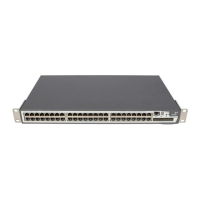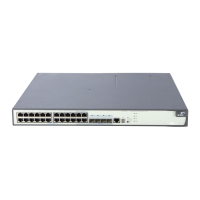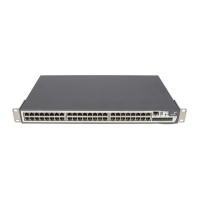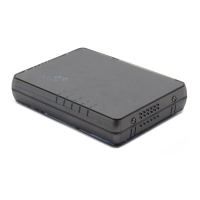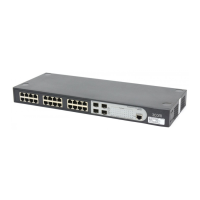38 CHAPTER 1: USING SYSTEM ACCESS COMMANDS
ftp-directory
directory
: Specifies the directory of ftp users, directory is a
character string of up to 64 characters.
lan-access: Specifies user type to lan-access, which mainly refers to Ethernet
accessing users, 802.1x supplicants for example.
terminal: Authorizes the user to use the terminal service (login from the Console
port).
Description
Use the command service-type to configure which level of command a user can
access after login. Use the command
undo service-type to restore the default
level of command (level 1).
Commands are classified into four levels, as follows:
■ 0 - Visit level. Users at this level have access to network diagnosis tools (such as
ping and tracert), and the Telnet commands. A user at this level cannot save
the configuration file.
■ 1 - Monitoring level. Users at this level can perform system maintenance,
service fault diagnosis, and so on. A user at this level cannot save the
configuration file.
■ 2 - System level. Users at this level can perform service configuration
operations, including routing, and can enter commands that affect each
network layer. Configuration level commands are used to provide direct
network service to the user.
■ 3 - Management level. Users at this level can perform basic system operations,
and can use file system commands, FTP commands, TFTP commands, XModem
downloading commands, user management commands and level setting
commands.
Example
To allow a user zbr to configure commands a level 0 after login, enter the
following:
<SW5500>system-view
System View: return to User View with Ctrl+Z.
[SW5500]local-user zbr
[SW5500-luser-zbr]service-type telnet level 0
To activate these settings, quit the system and login with the username zbr. Now
only the commands at level 0 are listed on the terminal.
[SW5500]quit
<SW5500>?
User view commands:
language-mode Specify the language environment
ping Ping function
quit Exit from current command view
super Set the current user priority level
telnet Establish one TELNET connection
tracert Trace route function

